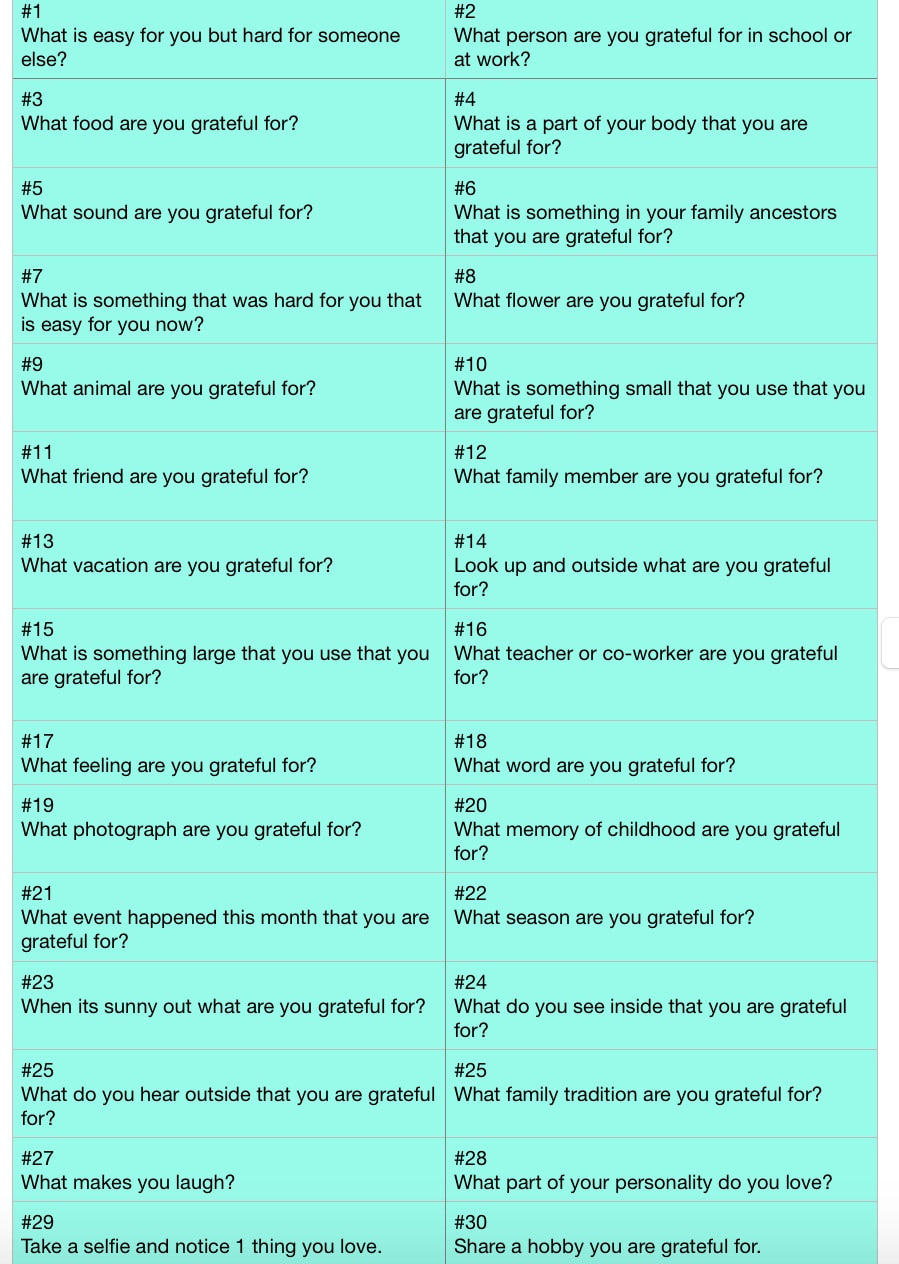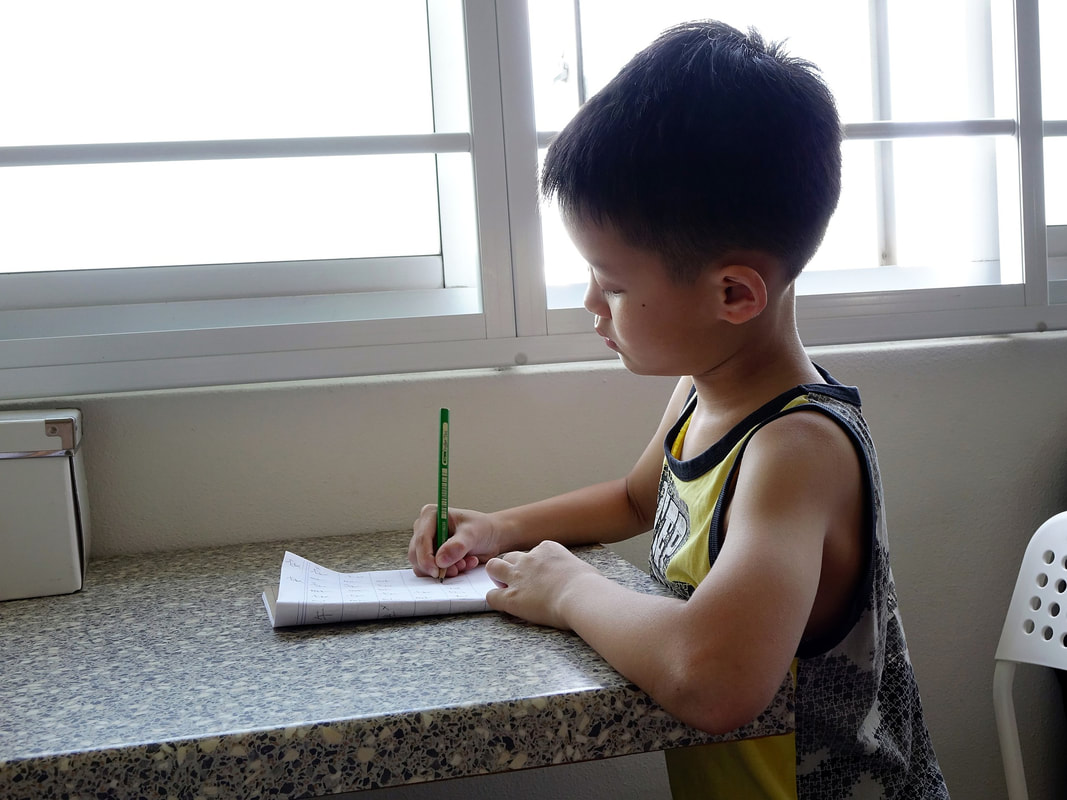|
“Music gives a soul to the universe, wings to the mind, flight to the imagination and life to everything.” ― Plato The beat. The lyrics. The rhythm. Fast. Slow. Music. Intuitively we know that music has an effect on our mood. Have you ever watched a mother singing a lullaby to a baby, as she sings and sways the baby is mesmerized. Watching that interaction brings about a feeling of tranquility and calm. On the other hand, when working out music can transform your movement giving your energy and pushing you forward to keep going. Depending on your mood you may listen to music that will evoke more of the feelings that are stirring inside or less. Music can help us express what we cannot put into words. It can be an effective way to help us express feelings and cope with the challenges of life. As a therapist I incorporate listening to music as part of working with clients. One way I do this is by asking a client to create a play list of songs in the session or out of the session that resonate with the them. Then we listen together and use it as a way to work through their experiences. The playlist usually has a variety of songs that evoke different feelings. Another way to explore music is to draw while listening because a deeper meaning may emerge. Explore what feelings were evoked and how the drawing or lyrics may reflect those feelings. It’s important to keep in mind when you are listening to music that it can evoke strong negative emotions. Therefore, I will purposely switch to music that will offer a client a chance to move into a song that will close down those strong emotions and offer a calmer state. Not sure what to play here is a playlist from Alexa.
Or check out this song list. Happy-Walking On The Sunshine by Katrina and the Waves & Happy by Pharrell Williams. Sad-When She Loved Me by Sarah Mclachlan & Crying by Roy Orbison. Angry-Wrecking Ball By Miley Cyrus & We’re Not Gonna Take It by Twisted Sister. Scared-Thriller By Michael Jackson & Under Pressure by Queen, David Bowe. Which song got your foot tapping, or body swaying? Which song made you think of a happy or sad memory? Notice the music you listen to throughout the day, what does it mean to you? Compile a list of your go to songs to help you move through your feelings. Music is very personal and what one person may love another may not. Find the music that resonates with you whether it’s classical, rap, country, blues or pop any music can help you express your emotions and cope with negative feelings. "Music is the shorthand of emotion” by Leo Tolstoy. Comment below songs that evoke your feelings!
3 Comments
The creation of Mother’s day has an interesting history in the United States and this year marks the 100th celebration. The initiative to have an official Mother’s Day was driven by Anna Reeves Jarvis who in the 1900s spearheaded a holiday to celebrate the sacrifices mother’s make for their children. She herself never had children but her goal was for the holiday to be a celebration between families, mother’s and their children.
A few years after Mother’s Day became a holiday Anna Jarvis had noticed the increase in commercialism associated with Mother’s day. She was so upset by this that she started a campaign to get it removed from the calendar because she felt Mother’s Day had lost its purpose. She said, “To have Mother’s Day the burdensome, wasteful, expensive gift day that … other special days have become, is not our pleasure. If the American people are not willing to protect Mother’s Day from the hordes of money schemers that would overwhelm it with their schemes, then we shall cease having a Mother’s Day—and we know how.” As of 2017 the National Retail Federation list’s Mother’s Day as one of the top consumer spending holiday’s of the year, with spending close to $200. As a therapist, I often spend a lot of time talking to clients about connection and relationship with important people in their life. In our culture, we are often driven to buy things to let people know we care about them. However, when you think of your favorite memories they aren’t about when you got new sneakers or a purse. Although you appreciate those things, favorite memories tend to be moments that we laughed or had an enjoyable experience with someone. So consider Mother’s Day a reason to promote connection and relationship with a parent / caregiver / someone who made a sacrifice for you or an imprint on your life in a positive way. There are many different way’s we can offer to show appreciation to the mom in our life without spending a lot of money. Here is a list of ideas that promote connecting and building our relationship without spending a lot of money.
The best most memorable moments are the ones that you spend together; what kind of memory will you make this year? As I watch my son play sports or perform in the theater I notice that I listen, cheer, and sometimes instruct from the sideline. However, I started to wonder over time what do my children need to hear or want to hear from me to keep them feeling good about what they are doing? As I started to step back I began to notice other parents shouting over the coach’s direction or yelling at the umpire, referee and coach. Kids look confused, or annoyed at their parents and need to make a choice. Do I listen to my parents or do I listen to my coach?
As my son gets ready to stand at the plate, I find myself noticing that I want to shout out ways he could hold the bat better or stand closer to the plate. Does he need me to give him feedback, and guidance or does he need encouragement? When I step back and watch, I see the coaches are instructing, correcting and teaching. So what is my role I wonder again? But, what should we say to our kids so they feel good about participating in sports, recitals or shows? Remember when you were teaching your child to walk. You held their hand, maybe even moved their legs, encouraged them to grab onto things, they took some steps then grabbed on to you and then you let go. They did it, they walked, and they fell, and eventually started running. You cheered and were excited. You probably didn’t shout out multiple instructions, “heel first, then toe,” or “left foot out, then right,” or even “get up, get up, hurry,” if they fell. There is a pressure that begins to build onto our kids when they are constantly given critical feedback from every adult they face. I am pretty sure they don’t want to make an error or play the wrong note at their recital. There is no greater love than what a parent has for their child and the success you want them to experience in life. But there has to be a balance in feedback both positive and negative. Overexcitement puts pressure on a child similar to critical feedback. It’s important to be encouraging, positive and present. In an article written by Tim Elmore, he says that the “3 healthiest statements that moms and dads can say to their student-athletes are”: Before the Competition:
Bruce Brown and Rob Miller of Proactive coaching did an informal survey of college athletes over decades. “ They asked the athletes what did their parents say that made them feel great and overwhelming response was I love to watch you play.” Wow, that’s it. “Six simple words,” that made such an impact. As you sit on the sideline know that just saying these simple words is more likely to keep your child’s passion going. As I teared up after watching my son’s performance, knowing how hard he worked and how nervous he was I found myself saying aloud to him when it was over, “I love to watch you perform.” He looked up at me, smiled, hugged me super tight and said, “Thanks mom.”  Love. Family. Relationships. How do you feel most connected to your child? Is it from a hug, a special dinner made for you, a small gift, or a compliment? The language of love can seem so simple to express, yet can go unnoticed from those around you. Parents deeply love their children but schedules are busy and sometimes the day goes by and we haven’t connected to our little loved ones. Life events change the family schedule and can impact the amount of time you have to spend together. Maybe you went from working part-time to full-time, or you are going through a divorce, or there is an illness in the family. These changes impact the way you interact and spend time with your child. You are tired when you come home, you have more things to fit in before bedtime and there is a feeling of being emotionally depleted. Over the course of months your children will notice and feel the difference. A book written by Gary Chapman, PH.D and Ross Campbell MD called “The Five Love Languages of Children” emphasizes understanding your child’s love language and then nurturing it to fill their “emotional tank”. The authors discuss that there are five love languages that children and adults need nurtured in order to be confident and stable emotionally. The following is a list of the five love languages and activities you can do to help your children have a full “emotional tank” so that they can thrive. Words of affirmation: Giving your child compliments, or encouraging words that are spoken or written. Leave a note for your child in their lunch box or a note on their mirror. Send a text message or emoji. Say things like “ I love you,” “you’ll do great on your test”, or “your smart”. For the month of February I will take a sticky note and everyday leave a compliment to my child and stick it on their bedroom door. Quality Time: Doing things together with no interruptions, one-on-one time, taking trips, going on walks, being together at home and not being interrupted, playing keep it up with a balloon or one on one conversation in the car. Telling them “I’d like to spend time with you today let’s pick something you want to do”. Television/video games not included. Receiving Gifts: Giving small tokens of a material gift. Giving a sea shell, stone(draw a picture on the stone), a facial expression that shows genuine love, giving time, or remembering a special occasion. Attending an event your child is in or making a desert together. Acts of Service: On going helpfulness, whether chores or fixing something that is important to the child. Helping them with homework, sewing their stuffed animal or fixing flat tire on their bike. You can say things like “What can I do for you?” or “Today, I did… for you.” “Would you like me to try and...” Physical Touch: Facial expressions that are warm and inviting, hugs, high-fives, fist bump, sitting close, and a group hug (the family pet is fun to snuggle, too). Sitting close and reading a book together. A sweet massage with an essential oil. It’s any kind of positive physical contact. The authors discussed that every child and adult has a primary love language that they prefer. However, it’s equally important to continue to give in the other areas too so that the child feels the parent’s heartfelt love. Be curious about which love language would best describe what your child needs and how does that compare to what you give?  “Gratitude is the healthiest of all human emotions. The more you express gratitude for what you have, the more likely you will have even more to express gratitude for.” —Zig Ziglar Having gratitude is more then being thankful for someone or something, it’s having a deep appreciation. Some synonyms of the word gratitude are blessed, appreciative, and grateful. Over the years there has been research proving the positive effects of our mind and body when we incorporate the practice of gratitude. Giving thanks when practiced regularly can keep you healthier and happier. Most times when large disasters strike we tend to focus on what we are grateful for in our lives. Then as we get further away in time from the disaster we go right back to cursing the driver in front of us for taking too long changing lanes. Our brains are thinking lots of different thoughts throughout the day. It is very easy to get stuck in a negative loop. Shifting our focus to what we are grateful for allows our brains to get back to focusing on the positive aspects in our life. Gratitude takes practice, it’s a skill you can develop. Here are some ways to incorporate gratitude into your life. Gratitude Jar - Every day write what you are grateful for on slips of paper and put it in the jar. Every 3 months take out the slips of paper and read through them. My family likes reading the notes every few months. It makes us laugh and reflect on moments we enjoyed. Or wait to read it until December 31, 2017 as you transition to 2018. Daily meditation - Stop, think and breath is an app that has gratitude meditations included. This is another way to have a daily intention and thoughts on what you are grateful for. Photographs - We know that teens love taking selfies so this is a great way to get all ages involved. Everyone in the family take 1 photograph a day of something you are grateful for. You print it out and add it to your jar or save it in a shared folder on your device and everyone can look at it at the end of the month or year.  My niece, Sammi, says, “I am thankful for having the courage to change my hair. Cutting my hair is a way for me to start over, like a new chapter. Doing something I want for myself.” 30 days - Each day of the month have a different question that everyone in the family can answer. Here is a list of some questions:  This week I am enjoying time off with family so taking time to write this article was hard. However, I am grateful for being able to write in my pajamas, on a computer that works well and I am grateful that my family gives me space and time to write. What are you grateful for today?
This month is filled with the hustle and bustle of the holiday season. There’s lots of coordinating between people, places and things. Miscommunication is likely to happen between family and friends. Whether it’s the hot topic of politics or playing a board game and all the little moments in between making cookies. Disagreements happen in relationships. What is important is how you choose to get through those moments. Will that disagreement bring your relationship closer or further apart?
“No, you were supposed to bring that, you never do anything that I ask!” And then. Silence. Silence is a form of communication that over time can drastically hurt any relationship. Taking a break from talking about something can sometimes be a helpful form of silence. However, the one I am referring to that is hurtful can be called “the cold shoulder” or “stonewalling”. This type of silence is way to never speak about the hurt or too have someone feel punished through the silence. Keeping hurt, anger and frustration inside only makes the brain and body feel more overwhelmed. Silence can develop due to trying to keep the emotions from overloading the brain. Other times, this strategy develops because the family style tends to have high conflict and the message is we must just keep the status quo. However, inside the burning feeling of frustration, sadness and loss keeps piling on. Making your voice heard despite wanting to revert to silence is very hard. When you’re with a person that uses silence as a way to communicate it can be difficult to break through. Our nervous system is set up in a way to protect us from danger. When your brain experiences data coming in as conflict it can turn on the alarm system which needs to fight, flight, freeze or collapse. Those responses are ways for the body to protect itself and survive what is happening. However, our perception is that this is a threat, turning our emotions off and staying silent is the way to survive. Being silent is not a strategy that works in the long run. Your brain gets flooded with so much emotion that it’s too overwhelming to speak out about the situation. This ends up creating a greater disconnect between yourself and others. So how do you go from using silence as your way to communicate to then speaking about your hurt.
The saying, “You catch more flies with honey than with vinegar,” always sticks in my mind when we are talking about communication. How we talk to each other and what we say is critical to keeping open communication. Here are some examples of statements that you can make to break the silence. -Hey we haven’t talk in a few_____, I’ve been upset and I am not sure how to talk about it. -I am feeling scared, I want to talk to you about this but I don’t know what to say. I don’t want us to be silent anymore. -We are just going through each day, and talking about what everyone needs. I miss talking to you. I miss you. -I am frustrated and I really don’t want to argue or do this silently then pretend to forget about it. I am scared about how to talk about this. I want to figure this out together. -I know if we talk about this it will be hard, but we can do it, I care too much about us and I don’t want to go on in silence. Maybe you are the one who often communicates, then pass this article along to someone who can benefit. Building a healthy relationship with a significant other, friend or relative takes hard work. It will feel scary at first to talk about your hurts but then a sense of relief and eventually closeness. Maybe the closeness is not with the other person but with yourself in being able to be speak your truth. So in these next few weeks of the holiday season break the silence. Be uncomfortable. Your truth being heard in a way that is open and loving to yourself and others is a gift any relationship would enjoy. “Goodbye’s hurt the most when the story was not finished”- unknown author
Loss. Unbearable and difficult to stand in grief and not run from it. The death of a loved one is devastating. Whether it’s a sudden death or one that was a result from a long term illness, it is all hard. Your brain is literally adjusting to this information. The painful conflict from our brain is, “Where is my loved one and why don’t I see them,” even though I know logically they are not here anymore. Their memory is all around you and it can be painful to think about those memories after they have died. I recently read it’s not time that heals all wounds but that at some point you start to adapt to the person no longer being physically around you and that helps you heal. We go through a variety of different feelings when we lose someone. We wish that we could close our eyes and let the grief pass without notice. We won’t magically feel better overnight, so it’s important to take some kind of action to help move the grief. You get to decide how you experience grief and what you need around you to bring you comfort. Ways to help heal
Grief can be a long journey. Sometimes getting through the day is the best we can hope for. Planning for ways to help you heal allows you to deal with grief even if its just one small step at a time.  Homework. Yes, it has begun. The goal of many parents is to get it done without nagging, complaining or arguing. How do you do that? What is the secret? I want my child to be organized, stay focused and learn from past homework mistakes. My answer is to develop a plan together. Involve your child in the goal setting instead of dictating to them what they need to do. This fosters their independence and participation, and critical thinking skills. So here are 5 strategies for a successful homework session and scripts on how to say it to your child. 1) Introduce the plan. “Last year we struggled getting homework done, I was yelling at you, and you would get upset at me and it was really hard. Let’s figure out how to be organized so we make doing homework easier.” They will be more open to hearing what you have to say. 2) Location. Have a spot they can keep all their papers, backpack, and even shoes. Maybe there is a corner on the counter that all the papers go. Also using a folder to keep homework in helps. “Where should we put your backpack, and papers when you come home from school?” and “What will you do when your done with homework?” No more scrambling to get out the door in the morning and homework still sitting in the printer, not packed. 3) Homework routine. Where will they study? The kitchen? Their bedroom? “Last year we had a hard time doing homework at home, let’s try going to the library after school and doing it there.” “Which spot in the house do you think would be the best to get the most work done?” “It usually works when you do homework after a snack, what do you think?” Then say, “Okay we can try this but if it doesn’t work we need to talk about what will.” 4). Embrace fidgeting. It can be really hard for many kids to sit still and do homework especially after a long day at school. “I notice when you do homework you move around a lot, lets come up with some ways you can move and still get your work done.” Kids who need to move can do homework standing up, chewing gum, holding a small fidget ball, sitting on an exercise ball or listening to soft music. If you can help them come up with a productive way to fidget it will help them focus. 5). Original plans evolve over time. Check in and discuss what is working and what is not working. “It has been really successful when you do your homework in your room with music, but I noticed that you’re not doing it at the time we picked and then its dinner and you’re not done.” Don’t wait and see what happens after the first marking period. Help your child be able to solve problems independently. If the first plan didn’t work that’s okay. Don’t toss in the towel and hope for better luck next time. Sit down and help your child plan for what they need. The face begins to turn red and I know each time it’s coming. A loud growl and words that sound like The store again! My brother is soooo annoying (then a loud smack), my app isn’t working! No, I don’t want to want turn the t.v. off. You are so mean. The loud and angry lion with roars of what he doesn’t want to do.
This is a tough day. Wait this happened yesterday, too! I have a few minutes of calm before the storm and I’m feeling like I want to avoid asking my kids anything because I don’t want to deal with the anger and I’m tired. What I want to do is make the days better but I keep getting pulled into to the same angry cycle. I just finished reading No Drama Discipline book by Dan Siegel. I decide to use it to help guide me in our family meeting. I approach the kids about sitting down together to talk, their eyes roll and the look of oh no is all over their faces. I take a deep breath to help me keep calm. We sit around the table and I start by saying all the specific things they do that have been good. I see a hint of a smile, then each one speaks about what has been positive this week. I take a deep breath. I’m going to be authentic and I say what we are going to talk about next is hard, but it’s something we need to figure out together. I give them each an example of how their behavior is not okay when they are angry. The first one starts with blaming his anger on everyone else. I empathize and say, getting really angry is hard, I get it. We are a family we need to figure out other ways to express our anger. You can be angry, but show me different a way to be angry. I take another deep slow breath. Our time is short. I don’t want this talk to go on for too long for I am concerned about it taking a turn for the worse. I only have their focus for so long. So we move to the next part which goes like this. We all like to go out to eat. Each of us likes to have different choices, so let’s come up with our own menu of calming options for when we get angry. I take out paper and markers and we do it together. They come up with a list of 10 items;
They draw some pictures to match the list. On the cover is a large lion to represent the anger. Then we added a specialty menu item that said if the first choice doesn’t work then try something else on the menu. So we all said good bye for now to the angry lion but if we hear any growling we know just what to feed it because we have some pretty good options on our menu. Families argue and disagree. That is part of being in a relationship with other people. However, it’s important for families to have open communication and develop different ways to problem solve. Anger is a normal feeling what’s important is how we cope and communicate our angry feelings. Meeting with your family in this way helps encourage a change in how the family communicates. Often with transitions comes anxiety and worry. It’s normal for a child to feel worried about going back to school. Questions may sound like this: What if my teacher doesn’t like me? What if I miss the bus? What if my friends don’t talk to me? What if I don’t know anyone at lunch? Who is my teacher? What if she’s mean? What if something happens to mom while I’m at school? Extreme fear may lead to not wanting to go to school. Avoidance of school only increases the anxiety and makes it harder for the child to attend. When a child stays home from school it reinforces that there is something to be worried about. A child may even resort to throwing a tantrum in order to convince parents that staying home is a good idea. It is very upsetting when a child or teen is having a tantrum. Parents often feel exhausted and helpless. They wonder whether or not to send their child, thinking that tomorrow won’t be as bad. However, anxiety gets bigger when the child avoids school, so tomorrow will not be better. It may actually be worse. Here are several ways parents can help:
A partnership between parents and child is crucial to be successful in challenging worry. We can’t “fix" when our children are worried, and rescuing them and avoiding the scary situation's only make worry take a stronger hold. We need to listen to what they feel and work together with them on confronting their fears.
|
AuthorROSE LAPIERE, LPC, RPT-S, ACS Archives
March 2020
Categories |










 RSS Feed
RSS Feed